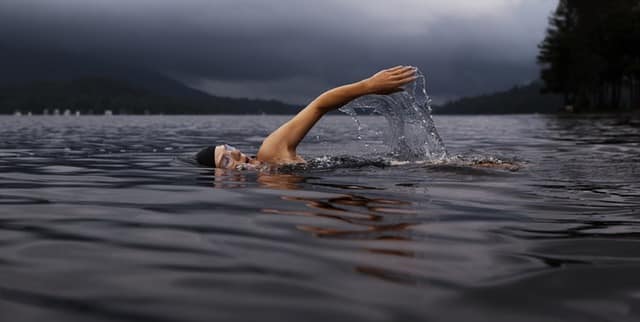
4 Basic Strokes You Can Learn at a Swim School
Swimming as a sport is complicated. A competitive swimmer must learn to swim the four required events: freestyle, backstroke, butterfly, and breaststroke. Using your arms and legs in any coordinated movement while trying to keep your head above water may be a daunting maneuver for beginners, but with proper instruction, it all comes easily.
The Freestyle Stroke
In terms of competitive swimming, freestyle refers to any stroke you want. However, because it is the fastest, the front crawl (or Australian crawl) is favored and has claimed the name of “freestyle”. The freestyle is one of the easier strokes to learn, along with the breaststroke. The freestyle stroke does require coordination of the legs and the arms in conjunction with the movements of the head and breathing. For this stroke, the head is forward and down while the propulsion is provided by the combination of legs alternately kicking and the full reaching strokes of the arms with cupped hands acting like paddles as the swimmer’s body is pushed through the water. Recreational swimmers will use this stroke most of the time and it is the most exciting event in swimming. The freestyle starts with the contestants at the edge of the pool, and their bodies are lowered, contracted and ready to release an enormous leap off the stand into the waters below.
The Butterfly Stroke
The butterfly stroke is the hardest to execute but the most fun to watch. The butterfly seems to defy science, but it can be accomplished with sufficient strength in the swimmer’s legs and upper body. It involves the person propelling their body through the water by spreading their arms out like wings above the water and paddling back under the water. The feet during this style are connected and being pushed up and down to increase speed. This stroke must be learned to make the swim team in high school but is low on the agenda of strokes for beginning swimmers to master.
The Breaststroke
The breaststroke is seen as one of the slowest moving swim techniques; however, it is one of the most suitable for long distance swims. Along with the butterfly stroke, it is one of the more difficult swim techniques to perform. It can be performed through pushing your hand straight through the water, and waving your hands back to your hips going all the way around. This stroke will engage your forearms, chest, and upper back more than any other swim style. The breaststroke can be performed at any pace and is a great workout.
The Backstroke
The backstroke is popular for those recreational swimmers who like to watch the clouds in the sky. The face never goes below the surface of the water for recreational swimmers, but for competitive swimmers, there is the turn at the end of the pool’s length. For the majority of the swim, you will be laying on top of the water on your back and paddling backwards. This stroke is not as easy as it looks in competitive events because it is easy to violate the swim lanes and become entangled with the lane markers, but when there are interesting clouds in the sky at the beach, it cannot be topped.
These four strokes are necessary for competitive swimming, but most recreational swimmers only use the freestyle and once in a while the backstroke. If you want to add another stroke to your freestyle, there are adult swimming lessons in Somerset NJ to help guide you through the proper techniques to master your favorite swim style.



